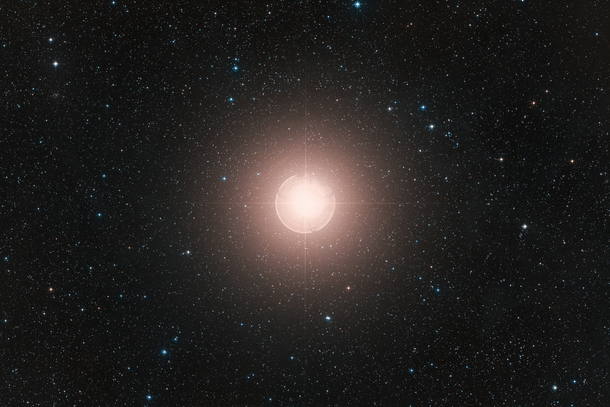News Brief
Betelgeuse: The Variable Red Supergiant Star Raises Concerns, And Excitement, About A Possible Supernova Explosion
Swarajya News Staff
Jun 15, 2023, 12:38 PM | Updated 12:38 PM IST
Save & read from anywhere!
Bookmark stories for easy access on any device or the Swarajya app.


Betelgeuse, the star in the Orion constellation, has been the talk of the town lately for its sudden and unexpected behaviour.
Starting in 2019, the star began to dim significantly, causing much speculation about a possible supernova explosion and its potential impact on Earth.
However, the star then brightened again, from 2021, leaving astronomers scratching their heads and wondering what could possibly be causing this behaviour.
Betelgeuse is classified as a variable star, which means that its brightness can fluctuate over time. It is the brightest among such stars, and it has a reputation for displaying pulsations.
Although many stars remain stable throughout their lifespan, Betelgeuse has been known to experience extreme brightening from time to time.
Despite this fame, Betelgeuse's recent behaviour has left astronomers with many questions.
The reason behind the star's sudden brightening remains unexplained, although it is suspected to be related to a dust cloud reflecting the star's light.
Nevertheless, experts remain optimistic about the potential of this red supergiant, which indicates that the star is approaching the end of its life.
Despite the excitement surrounding the possibility of a Betelgeuse supernova, scientists estimate that the star's end could still be quite far off.
Depending on the model used, experts predict that a supernova could occur within the next few thousand years or as much as 1.5 million years in the future.
Regardless of when it happens, the Betelgeuse supernova promises to be a remarkable and unforgettable spectacle worth waiting for.
Scientists are intrigued by the behaviour of Betelgeuse, which has raised many questions about its mass and distance.
Some theories suggest that this star has merged with a smaller companion, which could explain its faster rotation. However, more research is needed to understand this phenomenon adequately.
According to historical references, Betelgeuse has gone through a colour change, indicating rapid evolution and possibly a supernova in the future.
If this happens, the star would emit neutrinos initially and then rapidly increase in brightness, shining as brightly as the full Moon. This event could be a spectacular sight to witness.
After the initial supernova, the star would gradually fade, remaining visible during the day for several months and at night for one to two years.
However, there is little danger to Earth as the cosmic rays produced by supernovas pose minimal risk at typical distances. Therefore, there is no need to worry about the effects of this event on our planet.




